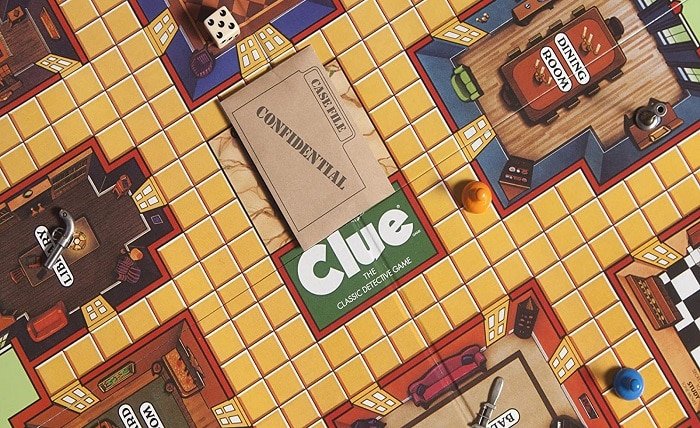Contexto Clue: Mastering the Game

Introduction
Contexto is an engaging and challenging word game that has captivated players worldwide. The essence of the game lies in deciphering clues and using them to solve puzzles. The key to excelling in this game is understanding how to interpret each Contexto clue. In this guide, we will explore what a Contexto clue is, how to use it effectively, and strategies to help you become a master of the game. Whether you’re new to Contexto or looking to improve your skills, understanding the importance of each Contexto clue is crucial to your success.
What is Contexto?
Before diving into the specifics of a Contexto clue, it’s important to understand the game itself. Contexto is a word puzzle game that challenges players to think critically and creatively. The game provides a series of clues that guide players toward finding the correct word or phrase. The Contexto clue is central to the gameplay, as it gives hints that lead players to the solution. Understanding how to read and interpret a Contexto clue can greatly improve your chances of winning.
The Importance of Contexto Clue
A Contexto clue is not just a hint; it is a vital part of the puzzle that can either make or break your success in the game. Each Contexto clue is carefully crafted to provide just enough information to point you in the right direction without giving away the answer outright. Recognizing the importance of each Contexto clue and learning how to analyze it is essential for progressing through the levels of the game. By focusing on the clues, you can sharpen your problem-solving skills and enhance your ability to decipher even the most challenging puzzles.
How to Interpret a Contexto Clue
Interpreting a Contexto clue requires a keen eye for detail and a deep understanding of language. A Contexto clue often relies on wordplay, synonyms, antonyms, or cultural references that may not be immediately obvious. To effectively use a Contexto clue, you need to break it down into its components, analyze the context, and consider possible meanings. This section will provide strategies for interpreting Contexto clues, helping you to unlock the answers more quickly and efficiently.
Common Types of Contexto Clue
Contexto clues come in various forms, each designed to challenge your cognitive abilities in different ways. Some common types of Contexto clue include anagrams, homophones, puns, and riddles. Understanding the different types of Contexto clue can give you a significant advantage in the game. This section will explore each type of clue in detail, offering examples and tips on how to approach them. By familiarizing yourself with these common Contexto clue types, you’ll be better prepared to tackle any puzzle that comes your way.
Strategies for Solving Contexto Clue
To excel at Contexto, it’s essential to develop a solid strategy for solving each Contexto clue. This involves not only interpreting the clues correctly but also managing your time and resources effectively. This section will provide a step-by-step guide to creating a winning strategy for Contexto, focusing on how to prioritize clues, when to take risks, and how to stay focused under pressure. By honing your strategy, you can improve your overall performance in the game and increase your chances of success.
The Role of Vocabulary in Deciphering Contexto Clue
A strong vocabulary is a powerful tool when it comes to deciphering a Contexto clue. The more words and phrases you are familiar with, the easier it will be to recognize patterns and connections in the clues. This section will discuss the importance of building and maintaining a robust vocabulary for Contexto and provide tips on how to expand your word knowledge. By enhancing your vocabulary, you’ll be better equipped to understand and solve even the most obscure Contexto clue.
Using Contexto Clue in Advanced Levels
As you progress through the levels of Contexto, the puzzles and clues become increasingly complex. Advanced levels often require you to think outside the box and use Contexto clues in more creative ways. This section will explore how to adapt your approach to Contexto clues as the difficulty increases, providing tips and techniques for navigating the more challenging puzzles. Whether you’re dealing with multiple Contexto clues at once or facing particularly tricky wordplay, this guide will help you stay ahead in the game.
The Psychology Behind Contexto Clue
Understanding the psychology behind a Contexto clue can give you an edge in the game. The creators of Contexto design each clue to challenge your cognitive processes, encouraging you to think in new and different ways. This section will delve into the psychological principles that underpin Contexto clues, exploring how they tap into your brain’s problem-solving abilities. By understanding the psychology behind the game, you can learn to anticipate the types of Contexto clues you’ll encounter and develop strategies to overcome them.
The Evolution of Contexto Clue in Gameplay
Over time, the Contexto clue has evolved, becoming more sophisticated and varied. This evolution reflects the changing nature of the game and the increasing skill level of its players. In this section, we will explore how Contexto clues have developed since the game’s inception, looking at trends and patterns in clue design. Understanding the evolution of the Contexto clue can provide valuable insights into how to approach the game and anticipate future challenges.
Tips for New Players on Using Contexto Clue
If you’re new to Contexto, the prospect of deciphering each Contexto clue might seem daunting. However, with the right approach, even beginners can quickly get the hang of the game. This section will offer practical tips and advice for new players on how to effectively use Contexto clues to solve puzzles. From basic strategies to common pitfalls to avoid, these tips will help you get started on the right foot and build your confidence as you progress through the game.
The Future of Contexto Clue in Gaming
As Contexto continues to grow in popularity, it’s likely that the game and its clues will continue to evolve. In this final section, we will speculate on the future of the Contexto clue, considering how advances in technology and game design might influence the game. Whether through new types of Contexto clue or innovative gameplay mechanics, the future of Contexto promises to be exciting and full of challenges. By staying informed and adaptable, you can continue to enjoy the game and master each Contexto clue that comes your way.
Conclusion
Mastering the Contexto clue is key to succeeding in the game. By understanding how to interpret clues, developing effective strategies, and continuously expanding your vocabulary, you can greatly improve your gameplay. Whether you’re just starting out or looking to refine your skills, focusing on each Contexto clue will help you unlock the answers and progress through the levels. With this comprehensive guide, you’re now equipped with the knowledge and tools to become a Contexto champion.
FAQs
1. What is a Contexto clue?
A Contexto clue is a hint or piece of information provided in the game Contexto, designed to help players solve word puzzles.
2. How can I improve my skills in deciphering Contexto clues?
Improving your skills involves practicing regularly, expanding your vocabulary, and learning to recognize different types of clues.
3. Are there different types of Contexto clues?
Yes, Contexto clues come in various forms, including anagrams, homophones, puns, and riddles.
4. What strategies can I use to solve Contexto clues more effectively?
Strategies include prioritizing clues, managing your time wisely, and developing a strong vocabulary to recognize patterns in the clues.
5. How does understanding the psychology behind Contexto clues help in the game?
Understanding the psychology behind Contexto clues can help you anticipate the types of challenges you’ll face and develop better strategies for solving them.




